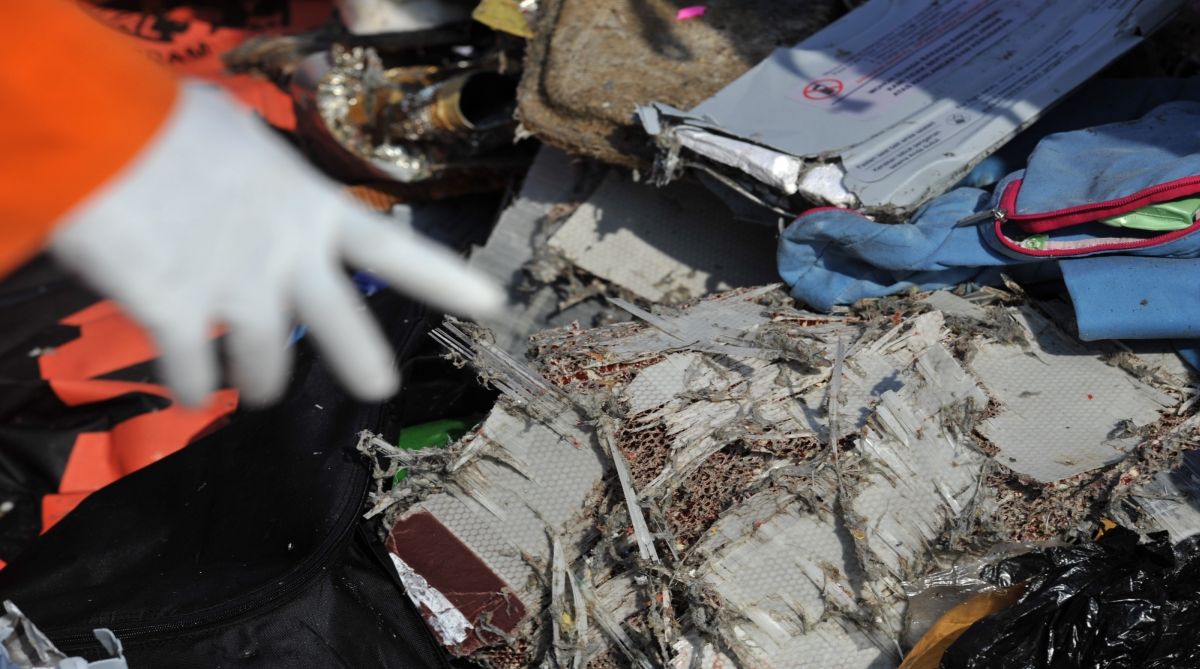Jet Airways pilots defer decision to stop flying
With management of debt-ridden Jet Airways scheduled to meet lenders on Monday, National Aviators Guild says it will give the airline a "chance of survival"

JAKARTA, Oct. 29, 2018 (Xinhua) -- An officer of the Search and Rescue shows the debris of the Lion Air plane found on the sea, at the Tanjung Priok port, Jakarta, Indonesia, Oct. 29, 2018. A passenger plane of Indonesia's Lion Air with 189 people aboard crashed into the sea off Karawang of Indonesia's West Java province shortly after taking off from Jakarta Monday, head of the national Search and Rescue Office M. Syaugi said. (Xinhua/Veri Sanovri/IANS)
The fragility of life has been emphasised yet again with the crash of a Lion Air flight in Indonesia that may have killed all 189 on board. The aircraft was quite new, the pilots were experienced and yet the mishap occurred in a part of the world where dependence on air travel has grown significantly over the past few years. While reasons for the crash will be determined in the days and weeks to come, findings of investigators are likely to offer scant comfort to bereaved kin, among them the family of a young Indian pilot,
Bhavye Suneja. Indonesia has a less than enviable air safety record and it was only a couple of years ago that Lion Air was finally allowed to operate in European airspace; hitherto the stigma attached to Indonesia’s poor aviation standards had precluded such entry. But even as the airline grew rapidly to become one of Indonesia’s largest, overtaking the state-owned Garuda, there had been sporadic concerns about its safety standards. While none of the incidents saw loss of life on the scale witnessed on Monday, they did cause questions to be asked, and in one case the National Transportation Safety Committee finding failures in crew resource management.
In a 2016 survey of 407 airlines, nine of the world’s worst performing airlines were said to be from Indonesia. It was only last year that Lion Air had announced an agreement with US-based manufacturer Boeing for purchase of 50 737 Max jets, of a later series than the one that perished this week. At the time, the airline had said it was the first in the world to induct the B737 Max 8 series into its fleet and the first to order the Max 9. Air travel is becoming increasingly popular in the developing world. China and India are among the world’s largest emerging aviation markets. Connectivity has increased and in India’s case has seen in recent years the development of many new airfields.
Advertisement
In parallel, the aviation sector has grown exponentially and while traditional carriers such as Air India and Garuda have suffered hiccups and sometimes worse, new kids on the block shorn of the heritage of inefficiency have thrived. It is in the midst of this story of growth that accidents have taken place.
While the Indian record has by and large been better than that of Indonesia, freak incidents such as a recent one where Jet Airways pilots failed to check cabin pressure after take-off or another where the inside panel of an Air India Dreamliner fell off after heavy turbulence ought to alert the aviation regulator to step up its vigilance. It was in India after all that some years ago, pilots were found to have forged their marksheets to claim a proficiency they did not possess. And even as Delhi celebrates the fastest growth among the world’s major airports, and other Indian airports see increased traffic, it becomes incumbent on aviation authorities to ensure safety trumps numbers.
Advertisement